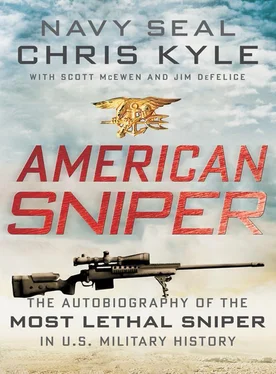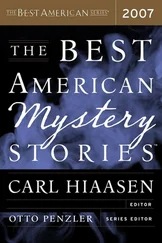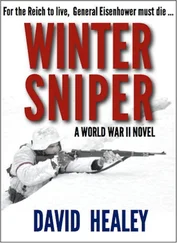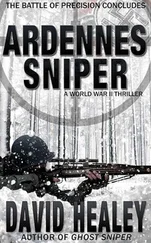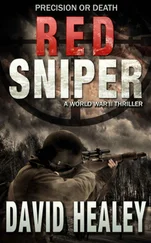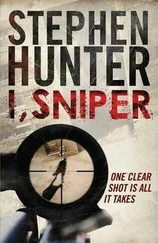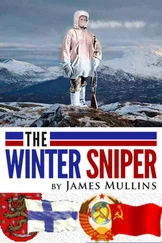He carried that hippo everywhere, even into battle. You just had to love the guy.
Our platoon had its own nickname, one that went beyond Cadillac.
We called ourselves the Punishers.
For those of you who are not familiar with the character, the Punisher debuted in a Marvel comic book series in the 1970s. He’s a real bad-ass who rights wrongs, delivering vigilante justice. A movie by the same name had just come out; the Punisher wore a shirt with a stylized white skull.
Our comms guy suggested it before the deployment. We all thought what the Punisher did was cool: He righted wrongs. He killed bad guys. He made wrongdoers fear him.
That’s what we were all about. So we adapted his symbol—a skull—and made it our own, with some modifications. We spray-painted it on our Hummers and body armor, and our helmets and all our guns. And we spray-painted it on every building or wall we could. We wanted people to know, We’re here and we want to fuck with you.
It was our version of psyops.
You see us? We’re the people kicking your ass. Fear us. Because we will kill you, motherfucker.
You are bad. We are badder. We are bad-ass.
Our sister platoon wanted to use the template we used to mark our gear, but we wouldn’t let them. We told them we were the Punishers. They had to get their own symbol.
We went a bit light with our Hummers. They were named, mostly, for G.I. Joe characters, like Duke and Snake Eyes. Just because war is hell doesn’t mean you can’t have a little fun.
We had a good team that deployment, starting at the top. Decent officers, and a really excellent chief named Tony.
Tony had trained as a sniper. He was not only a bad-ass, he was an old bad-ass, at least for a SEAL—rumor has it he was forty that deployment.
SEALs usually do not make it to forty and stay out in the field. We’re too beat-up. But Tony somehow managed it. He was a hard-core son of a bitch, and we would have followed him to hell and back.
I was the point man—snipers usually are—when we went on patrols. Tony was almost always right behind me. Generally, the chief will be toward the rear of the formation, covering everybody else’s ass, but in this case our LT reasoned that having two snipers at the head of the platoon was more effective.
One night soon after the entire platoon had gotten back together, we traveled about seventeen kilometers east of Ramadi. The area was green and fertile—so much so that it looked to us like the Vietnamese jungle, compared to the desert we’d been operating in. We called it Viet Ram.
One night not long after the unit reunited, we were deposited at a patrol area and began walking toward a suspected insurgent stronghold on foot. Eventually, we came to a huge ditch with a bridge going across it. Most of the time, these bridges were booby-trapped, and in this case we had intel indicating this one definitely was. So I went up and stood there, shining my laser to look for a trip wire.
I played the light across the top of the bridge but saw nothing. I ducked a little lower and tried again. Still nothing. I looked everywhere I could think of, but found no contact wires, no IEDs, no booby-traps, nothing.
But since I’d been told the bridge was booby-trapped, I was sure there had to be something there.
I looked again. My EOD—the bomb disposal expert—was waiting behind me. All I had to do was find a trip wire or the bomb itself, and he’d have it disarmed in seconds.
But I couldn’t find shit. Finally, I told Tony, “Let’s go across.”
Don’t get the wrong image: I wasn’t charging across that bridge. I had my rifle in one hand and the other parked protectively over my family jewels.
That wouldn’t have saved my life if an IED exploded, but at least I’d be intact for the funeral.
The bridge was all of ten feet long, but it must have taken me an hour to get across that thing. When I finally reached the other side, I was soaking wet from sweat. I turned around to give the other guys the thumbs-up. But there was no one there. They’d all ducked behind some rocks and brush, waiting for me to blow up.
Even Tony, who, as point man, should have been right behind me.
“Motherfucker!” I yelled. “Where the hell did you go?”
“There’s no reason for more than one of us to get blown up,” he told me matter-of-factly as he came across.
Fallujah had been taken in an all-out assault, moving through the city in a very organized fashion. While it had been successful, the attack had also caused a lot of damage, which had supposedly hurt support for the new Iraqi government.
You can argue whether that’s true or not—I sure would—but the top American command didn’t want the same thing to happen in Ramadi. So, while the Army worked on a plan for taking Ramadi with minimal destruction, we went to war in the area nearby.
We started with DAs. We had four interpreters—terps, as we called them—who helped us deal with the locals. At least one and usually two would go out with us.
One terp we all really liked was Moose. He was a bad-ass. He’d been working since the invasion in 2003. He was Jordanian, and he was the only one of the terps we gave a gun. We knew he would fight—he wanted to be an American so bad he would have died for it. Every time we got contacted, he would be out there shooting.
He wasn’t a great shot, but he could keep the enemy’s heads down. Most importantly, he knew when he could and couldn’t shoot—not as easy a call as it might seem.
There was this little village outside Shark Base we called Gay Tway. It was infested with insurgents. We would open the gates, walk out, and hit our target. There was one house we went to three or four times. After the first time, they didn’t even bother putting the door back.
Why they kept going back to that house, I don’t know. But we kept going back, too; we got to know the place pretty well.
It didn’t take too long before we started getting a lot of contact in Gay Tway and the village of Viet Ram. An Army National Guard unit covered that area, and we started working with them.
Among our first jobs was to help the Army reclaim the area around a hospital along the river in Viet Ram. The four-story concrete building had been started and then abandoned a few years before. The Army wanted to finish it for the Iraqis; decent medical care was a big need out there. But they couldn’t get close to it to do any work, because as soon as they did, they came under fire. So we went to work.
Our platoon, sixteen guys, teamed up with about twenty soldiers to clear the nearby village of insurgents. Entering town early one morning, we split up and started taking houses.
I was at point, carrying my Mk-12, the first guy in each building. Once the house was secure, I’d go up to the roof, cover the guys on the ground, and look for insurgents, who we expected to attack once they knew we were there. The group leapfrogged forward, clearing the area as we went.
Unlike in the city, these houses weren’t right next to each other, so the process took longer and was more spread-out. But soon enough, the terrorists realized where we were and what we were up to, and they put together a little attack from a mosque. Holed up behind its walls, they started raining AK fire at a squad of soldiers on the ground.
I was up on one of the roofs when the fight started. Within moments, we started firing everything we had at the bad guys: M-4s, M-60s, sniper rifles, 40-mm grenades, LAW rockets—everything we had. We lit that mosque up.
Читать дальше
